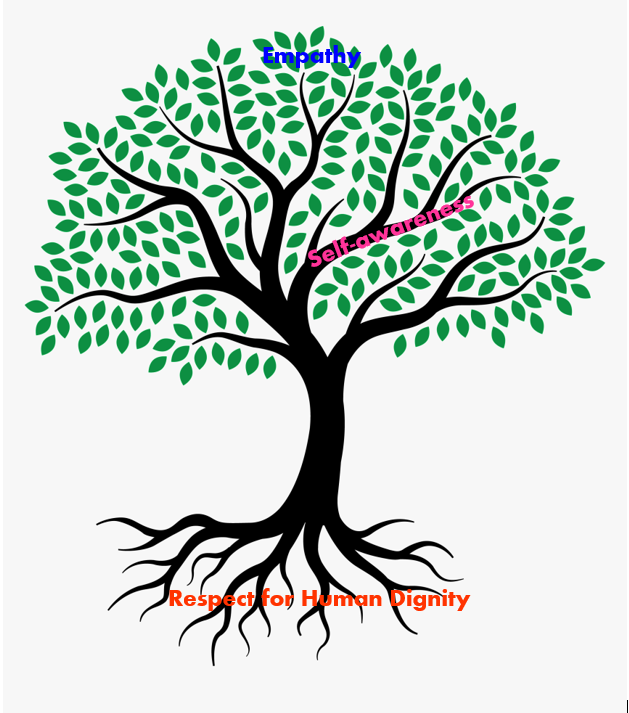If compassion is a tree, then human dignity is the roots, self-awareness is the branches, and empathy is the leaves.
Of a tree, human dignity is the roots. Respect for human dignity must run deep throughout clinical practice, as roots run deep in soil. Without roots, a tree topples over; likewise, without respect for human dignity, clinical interactions sit precariously at the surface level. Without the respect for human dignity, one cannot recognize the gravity of clinical work. One cannot recognize that medicine, a means to address and improve health and well-being, is necessary because of the inherent value of life. Respect for human dignity deepens the interaction, bringing it beyond the surface to a level that acknowledges the intertwining moral, ethical, systematic, and social aspects of medicine. Compassion is rooted in the respect for human dignity.
Self-awareness is the branches. Just as branches grow because of the roots, self-awareness builds on the respect for human dignity by recognizing the provider’s role in the physician-patient interaction. Providers must practice self-awareness to acknowledge what they know and do not know. Physicians are not omnipresent, all-knowing beings. But, if physicians know what they do not know, they can collaborate with colleagues in their healthcare team who do know. Furthermore, self-awareness should also be also cultural awareness. It means that providers recognize what identities they have and what they have experienced in their own lives; but more than that, providers must practice self-awareness to recognize what identities and experiences they do not have so that they can learn, listen, and appreciate all experiences and identities, especially those unlike their own. In this way, self-awareness leads to empathy, as branches lead to leaves.
Empathy is the leaves. Like leaves, empathy is the most visible part of the provider-patient encounter. It is what is felt. And emotions endure. Without empathy, words have meaning but not emotion. Empathy is not feeling for a patient, but is feeling with the patient. Because leaves are commonly used to identify species of trees, leaves display the species of tree. Similarly, compassion is displayed through empathy, to make patients feel recognized, seen, and understood.
May we all have a deep respect for human dignity, a strong sense of self-awareness, and impressive empathy; may we all grow trees with deep roots, strong branches, and impressive leaves.
Alice is a Clinical Research Coordinator in the OB-GYN Department at the University of Arizona College of Medicine Phoenix with aspirations to attend medical school. She enjoys working in women's health and questioning how to improve patient care through research.

